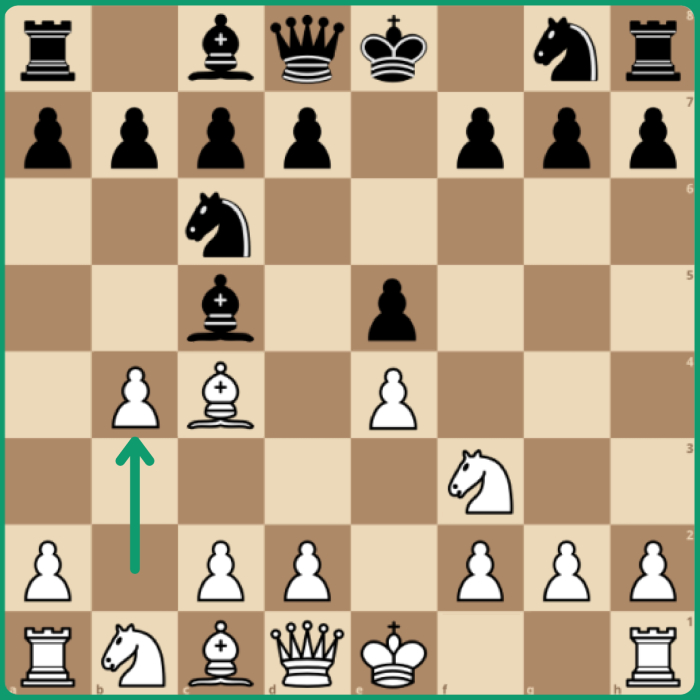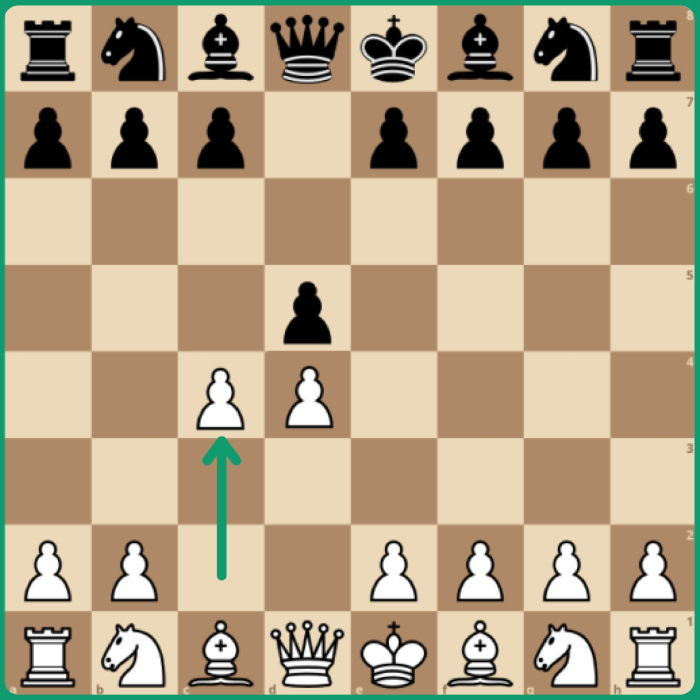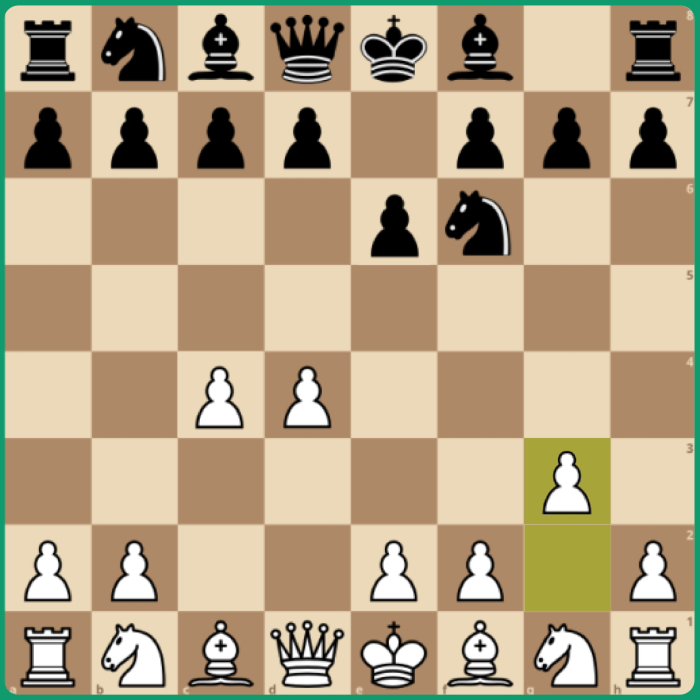
Conquer the Board in 2024 | Best Opening Chess Moves for Whites
The right to the first move is a privilege that comes with the color of power in chess. With the first-move advantage, White players have a unique opportunity to gain a strategic advantage over their opponents. Most players strive to get a grip on the center of the board with well-developed pieces and launch an attack to catch Black by surprise.
Whether you are into an aggressive and dynamic or more strategic and positional game, with the right strategy, everyone can master the board and come out on top. By leveraging the privilege of the first move and knowing a few of the best chess opening moves, you will reach maximum coverage and mobility for the game ahead.
Ready to get in the game? Here's your cheat sheet for conquering the board with the best chess opening moves for White!
The Fundamentals of Chess Openings
A winning game starts with a good opening in chess. In a broader sense, chess opening is the first phase of the game, distinguished from the middlegame and endgame.
Your strategies should serve a purpose by sticking to the basic chess opening principles. A well-played opening allows the players:
- Control the center: Every chess player aims to gain a strong foothold in the center of the game. This will give them control over the game's pace and flow, allowing them to develop their pieces and build up an attack.
- Space Control: Having more space means having freedom and more squares to move about and develop. This often leads to well-coordinated pieces which can be used to attack the enemy.
- Prepare for the middlegame: Solid openings allow you to prepare for the more complicated middlegame. By carefully coordinating your pieces, you can transform a lead in development into an advantage, which can be consolidated into a winning endgame.
The key to success is recognizing the differences in strategy between Whites and Blacks and choosing your approach accordingly. Whites can opt for dynamic or strategic openings, each having advantages and employing different tactics.
While a dynamic opening focuses on finding aggressive tactics and seizing control of the center with your lead in development, a strategic opening plays out at a slower rate with calm positional play to mobilize your pieces step by step.
Popular Chess Openings for Whites
To help you take the lead on the board, the opening moves discussed below will be classified under either strategic or dynamic openings.
Opening Types Defined: Dynamic Openings
King's Gambit

Historically, one of the oldest and most popular openings for White, the King's Gambit is a dynamic approach that seeks to gain control of the center by launching an attack. It's an aggressive move White can make and involves sacrificing a pawn in exchange for mobility.
The King's Gambit begins with the following moves:
- e4 e5
- f4
Once Black accepts the gambit, White can quickly develop their pieces. Here you have two options:
- Develop the Knight to f3
- Develop the Bishop to c4
For the first case, your idea will be to use the dark square Bishop to recapture the Black Pawn at f4. Your opponent may resort to protecting it with a Pawn at g5.
Meanwhile, you can develop your light square Bishop for the second case to let the Black Queen give a check on h4. Your response will be moving your King to f1. Losing the right to the castle, White gains a tempo to chase away Black's Queen with Knight at f3. Once your opponent retreats their Queen, you end up with two developed pieces.
Still, remember that no matter the move, your objective must be to maintain your central positions and ensure all your pieces remain active. This is a brief representation of the King's Gambit in action. Yet, it's important to note that depending on your opponent's response, there are countless possibilities and strategies to explore.
Evans Gambit

An aggressive line of the Italian opening Giuoco Piano, Evans Gambit is a popular gambit aiming to gain a strong foothold in the center.
It begins with the following moves:
- e4 e5
- Nf3 Nc6
- Bc4 Bc5
- b4
The core idea behind Evans Gambit is to sacrifice the Pawn with b2-b4, thus gaining an advantage in developing and creating a strong central presence. While imposing a threat for the Bishop at c5, Black can either retreat to b6 (thus declining the Evans Gambit) or take the Pawn with Bxb4 (thus accepting the Evans Gambit).
If Black accepts the gambit, White has compensation with the b4 Pawn sacrifice. This time Black is forced to retreat as Black’s Bishop is under attack.
While Black has to protect his Bishop, White implements its mission to control the center and eventually attack Black’s e5 Pawn with d4.
Evans Gambit is a risky variation, White sacrifices a Pawn in exchange for fast development and initiative.
It's important to be aware of the risks that come with this gambit. White has to push forward and try to win back material or gain the advantage with the lead in development. Otherwise, he sacrifices a pawn for nothing.
Strategic Openings with Positional Play
Queen's Gambit

One of the oldest and most commonly used openings, the Queen's Gambit is a classic approach to positional play. It seeks to gain control of the center while maintaining the piece development and formation of a strong pawn majority.
The Queen's Gambit begins with the following moves:
- d4 d5
- c4
Based on Black's response, the gambit has two major variations: the Queen's Gambit Accepted (QGA) and the Queen's Gambit Declined (QGD). Once Black accepts the gambit, White proceeds to dominate the center with the Pawn at e4.
In QGA, the Pawn sacrificed doesn't cause much trouble for White, since they get a significant advantage in the center as compensation and even win the pawn back in many cases.
Catalan Opening

To catch Black off guard, the Catalan Opening aims to control the center with the Pawn at d4 while developing pieces in the direction of the King's Bishop and Queen.
It begins with the following moves:
- d4 Nf6
- c4 e6
- g3
White adopted the mix of Queen's Gambit and Reti Opening while playing the Catalan. These will serve as a foundation for White's initiative in the center through a slower, more secure approach.
White can then expand its central presence with the Pawn at e4. This is the goal to achieve in Catalan, but it is not as easy as it may seem. White will need to develop many moves to prepare e4, and Black can still respond to stop it.
Practical Tips to Improve Your Opening Strategy
Whichever opening variation you choose, it's important to have a plan before playing. Think ahead and consider the significance of each move to make efficient use of your time.
Remember that a successful opening strategy is all about control. Here are a few tips to help you sharpen your skills and develop a winner's mindset for future games.
Tip #1. Fight for the Center
Chess is all about a fight and a battle for control of the center. As White players always have the advantage of making the first move, they can start controlling the center first. The player who secures the center of the chessboard will have more space, providing additional choices and freedom to maneuver their pieces.
Tip #2. Develop the Minor Pieces First
You’ve probably heard that you shouldn’t take your Queen out too early as it will get attacked continuously, which in turn will force you to make additional moves with it slowing down the development of other pieces. So develop your minor pieces first (Knight and Bishop) to be able to castle and start a quick attack if your opponent delays their development.
Tip #3. Castle on the Safer Side
With minor pieces successfully developed, the next step is to protect your King. Castling on the safer side will keep your King from danger and allow Rooks to connect and become more active on the board.
Tip #4. Don't Disrupt Your Pawn Structure
Try to avoid double Pawns, as it weakens the structure and control. To ensure you get to the endgame with a comparatively higher material advantage, it's important to maintain your Pawn structure and not let yourself be dragged into unnecessary trades.
It requires a lot of thought and calculation to keep track of all the pieces, but it will be worth it in the end. Following these simple tips, chess players can easily turn their game around and develop a winning strategy.
Find the Best Opening Chess Moves for Your Game!
Learning a chess opening is a great way for beginners to get familiar with the game and develop a strong sense of strategy. Yet, exploring and learning by heart every chess opening is tremendous, if not impossible. To help you cope with the task, Chessify.me offers a rich library of references with games recorded since 1475.
Access the wide selection of openings from the right menu of your Chessify.me dashboard and see which one best fits your skills. Pick the most suitable strategies and explore different scenarios to practice your moves.
Summing up
As the game evolves, so should your strategy. Once you find openings that you're comfortable playing, start exploring new territories, and push your boundaries.
If you're a chess aficionado looking to up your game and enhance your ELO rating, Chessify.me is the ultimate platform for you! Get more advanced tips from our grandmasters to find chess-opening novelties! The comprehensive suite of features includes game analysis, video search, an opening explorer tool, and access to the expansive database with over 9 million games in it.
Join us now – let's take your gaming skills stratospheric!
Remember that chess is a game of skill and knowledge. Keep practicing and explore how to apply the best opening chess moves in every game!



